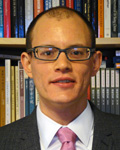2012
Phillip Emmanual Bloom
- Doctoral Candidate
- Harvard University

Abstract
This dissertation identifies a paradox at the heart of Song-dynasty Buddhist art. On the one hand, the celestial pantheon was given visual form in increasingly bureaucratic, rational ways. On the other hand, the boundary separating that divine realm from the human world became increasingly permeable; gods and ghosts became an omnipresent part of daily life, routinely represented in text and image. This study argues that the key to understanding these parallel phenomena lies in the Water-Land Ritual, a massive rite, codified in the Song, that involves feting all beings in the cosmos, both Buddhist and non-Buddhist. Using numerous sculptures, paintings, and texts, it reconstructs the early history of the ritual and links its rapid rise in popularity to new understandings of the media of painting and sculpture.

